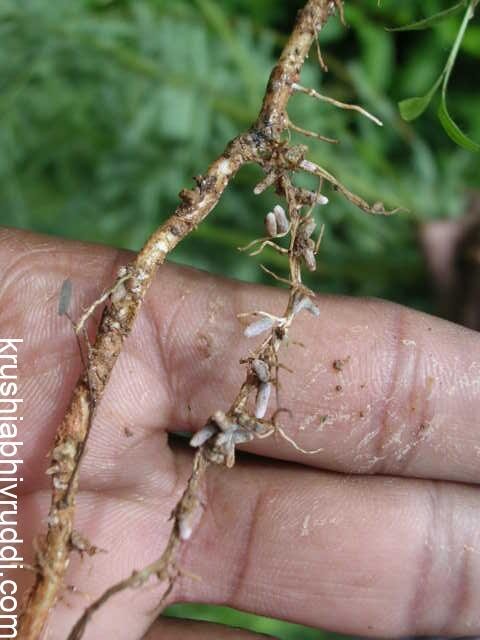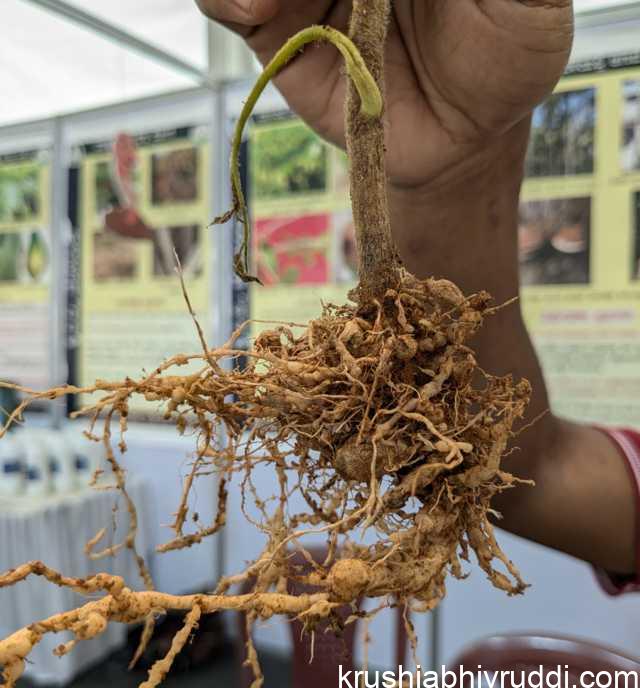In modern agriculture, there is a growing awareness about the importance of sustainable and natural methods to enrich the soil. Among the various natural agents that help in maintaining soil fertility, legume plants play a vital and irreplaceable role. These humble plants act as natural fertilizers by fixing atmospheric nitrogen and enriching the soil with essential nutrients. Understanding their mechanism can greatly help farmers reduce dependency on chemical fertilizers and maintain long-term soil health.
Nature of Legume Plants:
Legume plants belong to the Fabaceae family and include a wide range of crops like red gram (tur), green gram (moong), chickpea (chana), cowpea (lobia), soybean, groundnut, and clovers and lucerne used in fodder systems. These plants are unique because they form a symbiotic relationship with nitrogen-fixing bacteria called Rhizobium, which live in specialized structures on their roots called nodules.

How Legumes Collect Nutrients from Atmosphere:
The most remarkable feature of legumes is their ability to fix atmospheric nitrogen. The air we breathe contains 78% nitrogen, but in a form that plants cannot use directly. Legumes solve this by forming an alliance with Rhizobium bacteria, which have the unique ability to convert atmospheric nitrogen (N₂) into ammonia (NH₃) – a form that plants can readily absorb and use.

Process of Nitrogen Fixation:
- Infection and Nodule Formation: When a legume seed germinates, Rhizobium bacteria from the soil infect the root hairs and trigger the formation of nodules.
- Nitrogen Fixation: Inside the nodule, the bacteria receive sugars and shelter from the plant and in return, fix nitrogen from the atmosphere using a special enzyme called nitrogenase.
- Ammonia Production: The fixed nitrogen is converted into ammonia, which is then absorbed by the legume plant to build proteins, chlorophyll, and other essential compounds.
Storage and Use of Fixed Nitrogen:
The nitrogen fixed by Rhizobium is first used by the legume plant itself. It helps in rapid vegetative growth, better seed formation, and increased protein content in grains. Some of this nitrogen is stored in the plant’s tissues – especially in leaves, stems, and seeds.

How Nutrients Are Released into the Soil:
The fixed nitrogen does not benefit the legume crop alone. It also contributes to soil fertility in the following ways:
1. Root Exudation:
During the growth period, a small portion of fixed nitrogen leaks from the roots into the surrounding soil. This enriches the rhizosphere (root zone), improving the nutrient availability for neighboring crops.
2. Leaf Fall and Organic Matter:
Leaves and other plant parts that fall to the ground during growth or after harvest decompose and release nitrogen and other nutrients into the soil. This adds organic matter and improves soil microbial activity.
3. Nodule Breakdown After Harvest:
After harvesting the legume crop, the roots and nodules remain in the soil. As they decompose, they release stored nitrogen, making it available for the next crop. This is why legumes are often used as green manure in crop rotations.
Natural Soil Enrichment through Crop Rotation:
A popular farming method is to rotate cereal crops (like rice, maize, or wheat) with legume crops. This allows the soil to recover naturally without synthetic fertilizers. For example, planting moong after paddy or soybean before maize improves soil nitrogen and reduces fertilizer cost for the following crop.
Benefits of Legume Plants to Farmers and Soil
- Reduces need for nitrogen fertilizers, saving input cost.
- Improves soil structure and organic matter.
- Enhances microbial activity and overall soil health.
- Prevents soil erosion due to better root binding.
- Supports sustainable agriculture and reduces environmental pollution.
Legume plants are not just crops; they are natural soil doctors. Their unique ability to capture nitrogen from the air and release it into the soil makes them an essential part of sustainable farming practices. Every farmer should consider incorporating legumes into their cropping system—not just for their yield, but for the hidden service they offer to the soil and future crops.
By adopting legume-based crop rotation, intercropping, and green manuring, we can move towards low-cost, eco-friendly, and resilient agriculture that supports both farmer income and soil health.











